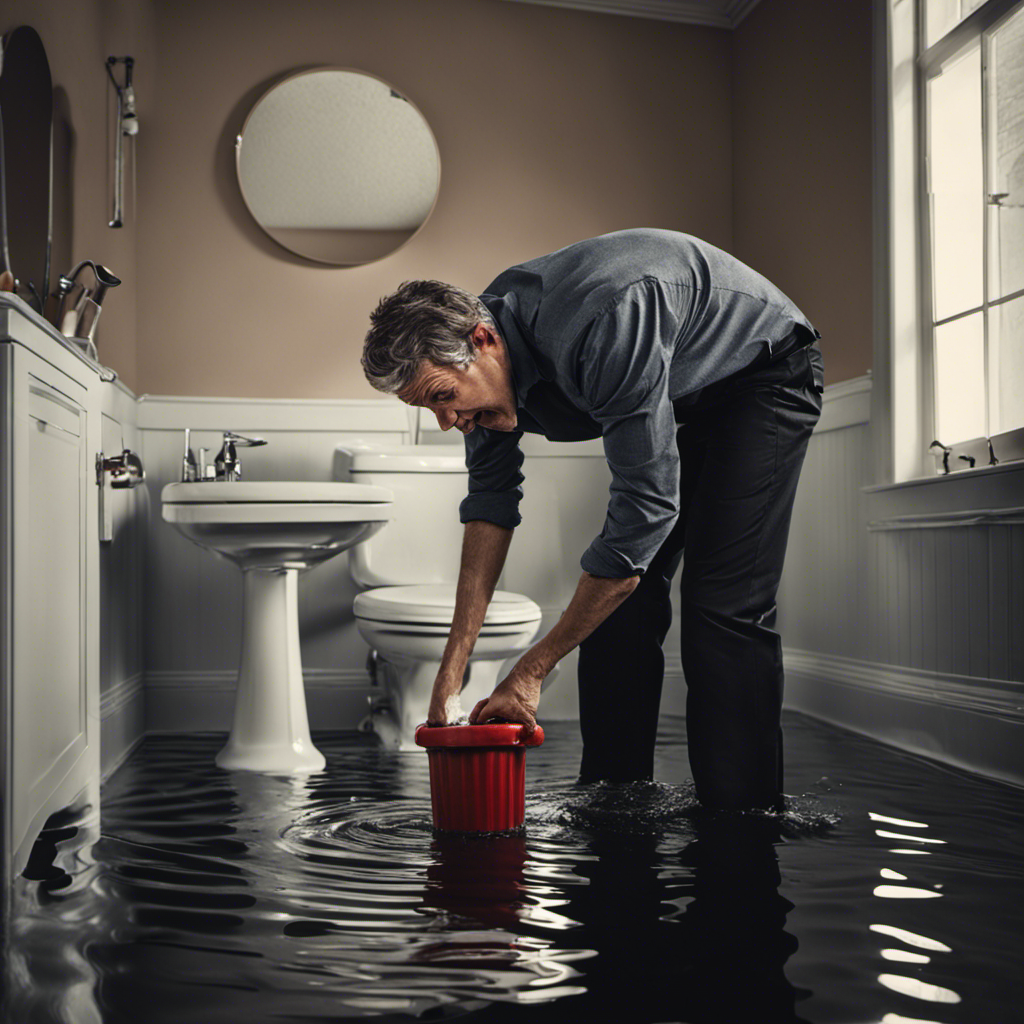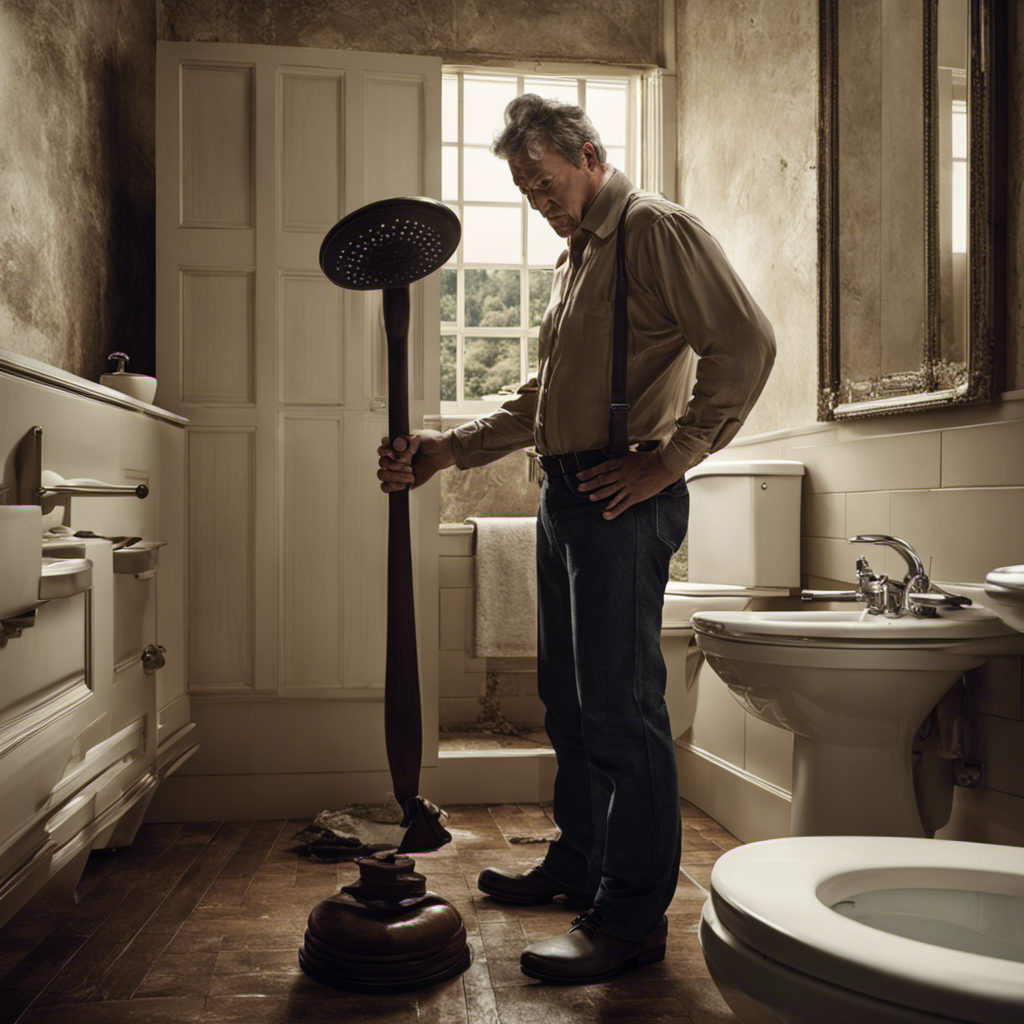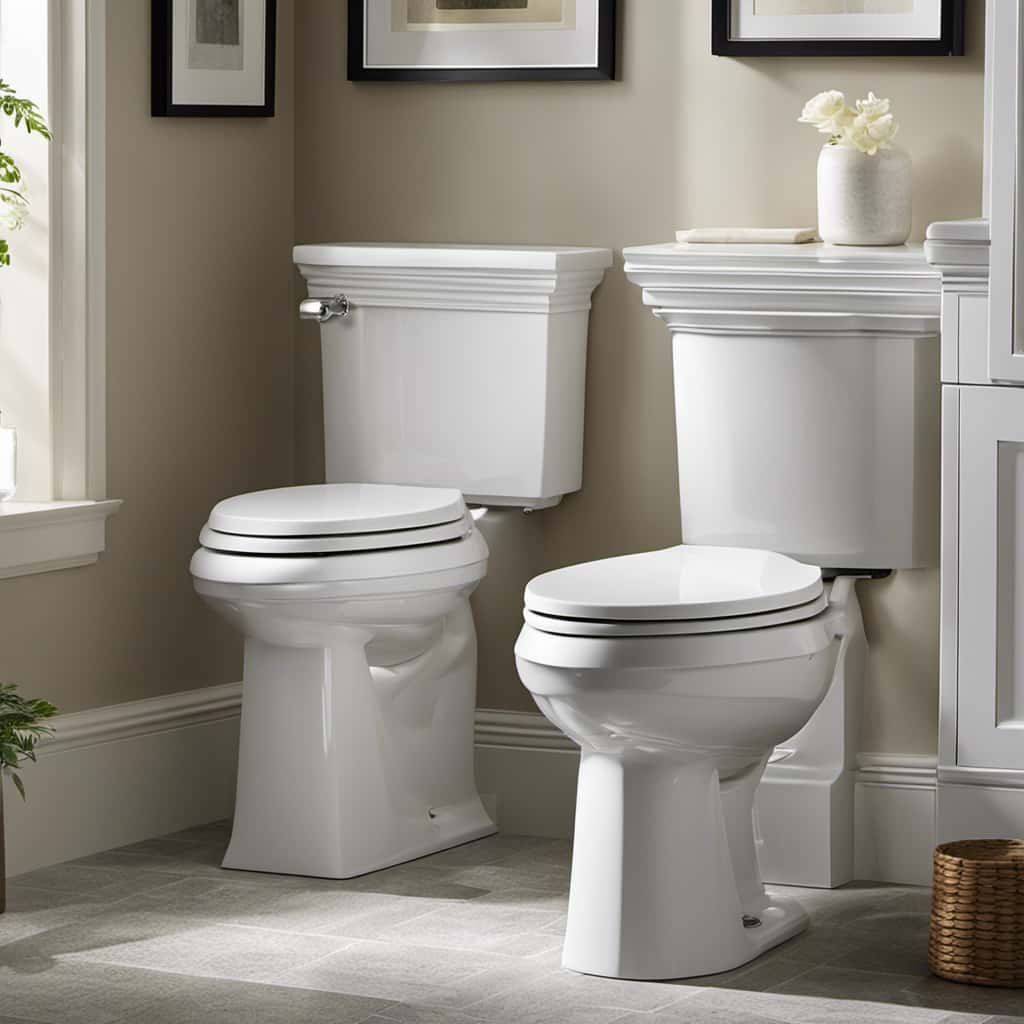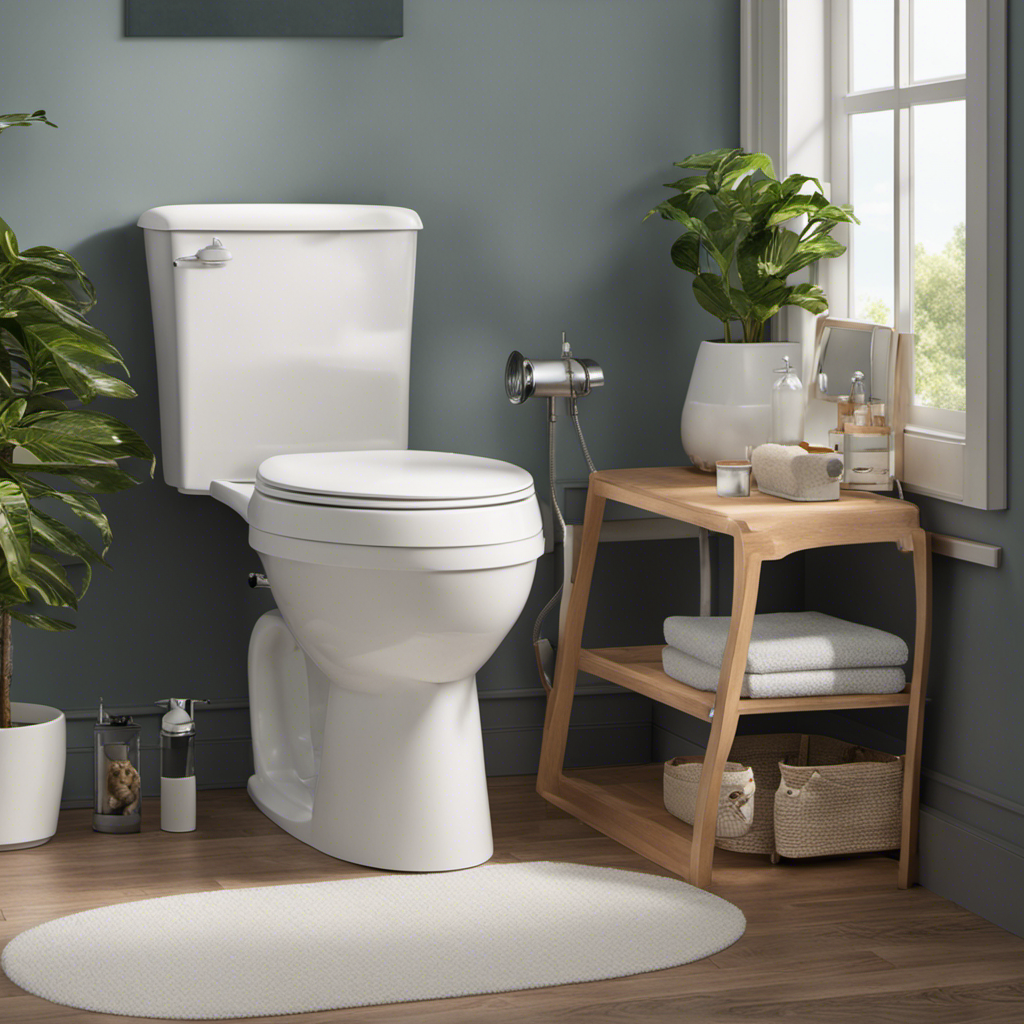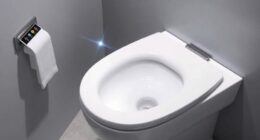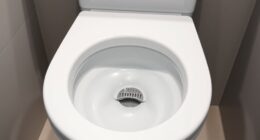Hey there!
Did you know that clogged toilets are one of the most common household plumbing issues? If you’re facing this frustrating situation, don’t worry, I’ve got you covered.
In this article, I’m going to share some valuable tips and techniques on how to unclog your toilet effectively. From using a plunger to exploring alternative methods, I’ll guide you step-by-step through the process.
So let’s dive in and get your toilet back to its flushing glory!
Key Takeaways
- Assess the severity of the clog by observing the water level and flushing the toilet.
- Gather the necessary tools and supplies such as a plunger, toilet auger, and gloves.
- Use a plunger to create suction and dislodge the clog, and consider using a toilet auger if needed.
- Practice good toilet maintenance by avoiding flushing non-flushable items and regularly cleaning the toilet bowl.
Assess the Severity of the Clog
You should first try flushing the toilet to see if the clog is severe. Sometimes, a simple flush can dislodge minor clogs and restore the toilet’s normal function.
If the water level rises or doesn’t go down after flushing, the clog may be more severe. In this case, it is important to determine the urgency of the situation.
If you have multiple toilets in your home and the clogged one is not your only option, you may choose to wait and assess the situation further. However, if this is your only toilet or if the clog is causing significant inconvenience, it is advisable to call a plumber.
They have the expertise and tools to handle stubborn clogs and prevent further damage to your plumbing system.
Gather Necessary Tools and Supplies
First, make sure you have all the necessary tools and supplies to address the clogged toilet. Having the right equipment can make the unclogging process much easier and more efficient. Here are some common household items that can be used for unclogging toilets:
| Tools | Supplies | Additional Items |
|---|---|---|
| Plunger | Rubber gloves | Bucket |
| Toilet auger | Toilet bowl cleaner | Old towel |
| Wire coat hanger | Hot water | Plastic bag |
Having these tools and supplies on hand will help you tackle the clog effectively. Remember, prevention is key when it comes to toilet clogs. Avoid flushing excessive amounts of toilet paper or disposing of non-flushable items in the toilet. Regular maintenance and cleaning can also help prevent clogs from occurring. Now, let’s move on to the next step: trying to unclog the toilet using a plunger.
Try Using a Plunger to Unclog the Toilet
Using a plunger is an effective method to unclog a toilet. When faced with a clogged toilet, it is important to act quickly and try the plunger method before considering other options. Here are some reasons why using a plunger is a good first step:
- Plungers are easily accessible and affordable.
- They can create a strong suction force that helps dislodge the clog.
- Plunging can often solve the problem without the need for additional tools or professional help.
If the plunger fails to unclog the toilet, there are other options to consider. One alternative is to use a toilet auger, which is a specialized tool designed for more stubborn clogs. However, if all else fails, it may be necessary to call a plumber. They have the expertise and tools to tackle even the most stubborn clogs and ensure your toilet is back in working order.
Explore Alternative Methods for Unclogging a Toilet
When exploring alternative methods for unclogging a toilet, it’s important to consider the effectiveness of a toilet auger. A toilet auger, also known as a plumbing snake, is a long flexible rod with a coiled wire at the end. It is designed to break up and remove stubborn clogs in the toilet drain.
Using a toilet auger is fairly straightforward. You simply insert the wire end into the drain and rotate the handle to maneuver the wire through the pipes. This action helps to dislodge the clog and restore proper flow.
If using a toilet auger doesn’t work, you may want to try chemical solutions specifically designed for unclogging toilets. However, it’s important to use these chemicals with caution and follow the instructions carefully.
If all else fails, it may be time to call in professional plumbing services to resolve the issue. By incorporating these alternative methods, you can effectively unclog your toilet and prevent future clogs by practicing good toilet maintenance.
Prevent Future Clogs by Practicing Good Toilet Maintenance
To prevent future clogs, you should regularly clean your toilet and avoid flushing items that can cause blockages. Maintaining a clean toilet is essential for its proper functioning and preventing clogs. Here are some tips to help you keep your toilet clog-free:
-
Clean the toilet bowl regularly using a toilet brush and a mild cleaning solution. This will help remove any buildup that can lead to clogs.
-
Avoid flushing items such as baby wipes, paper towels, cotton balls, and feminine hygiene products. These items do not break down easily and can cause blockages in the pipes.
-
Consider using a toilet paper that is designed to dissolve quickly in water. This can help prevent toilet paper from accumulating and causing clogs.
Frequently Asked Questions
Can I Use Chemical Drain Cleaners to Unclog My Toilet?
I wouldn’t recommend using chemical drain cleaners to unclog a toilet. They can be unsafe and may cause damage to your plumbing. There are alternative methods, like using a plunger or a toilet auger, that are safer and more effective.
How Do I Know if the Clog Is Caused by a Foreign Object, Like a Toy or a Small Item?
When it comes to detecting foreign objects causing toilet clogs, it’s important to look out for signs like unusual sounds or flushing difficulties. Common causes of clogs include toys, small items, and excessive toilet paper usage.
Is It Safe to Use a Toilet Auger to Unclog the Toilet?
It’s safe to use a toilet auger to unclog a toilet, but there are alternative methods too. It’s important to follow safety guidelines and use caution when using any tool to avoid further damage.
What Should I Do if the Plunger Doesn’t Work?
If the plunger doesn’t work, there are alternative solutions to unclog a toilet. You can try using a toilet auger or a homemade mixture of hot water and dish soap. If all else fails, it’s best to call a professional plumber.
Are There Any DIY Methods to Prevent Future Toilet Clogs?
There are several DIY preventive measures and tips for toilet maintenance. Regularly cleaning the toilet, avoiding flushing non-flushable items, and using a drain snake can help prevent future clogs.
Conclusion
To wrap it up, dealing with a clogged toilet can be a daunting task, but with the right tools and techniques, it’s a problem that can be easily solved.
By assessing the severity of the clog, gathering the necessary supplies, and using a plunger or alternative methods, you can quickly get your toilet back to its working condition.
Remember, prevention is key, so practicing good toilet maintenance will help you avoid future clogs.
So don’t let a clogged toilet get you down, tackle it head-on and flush those worries away!
